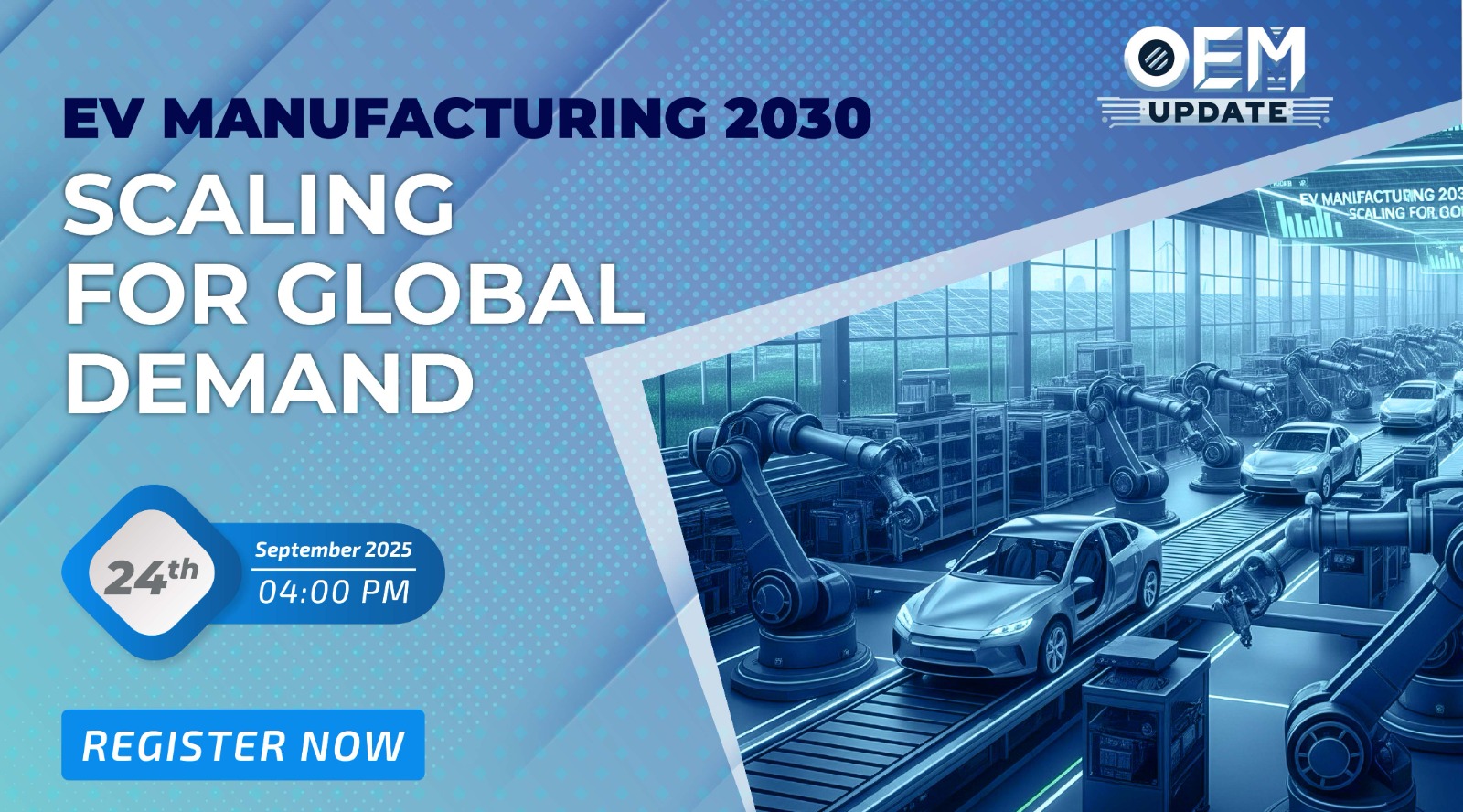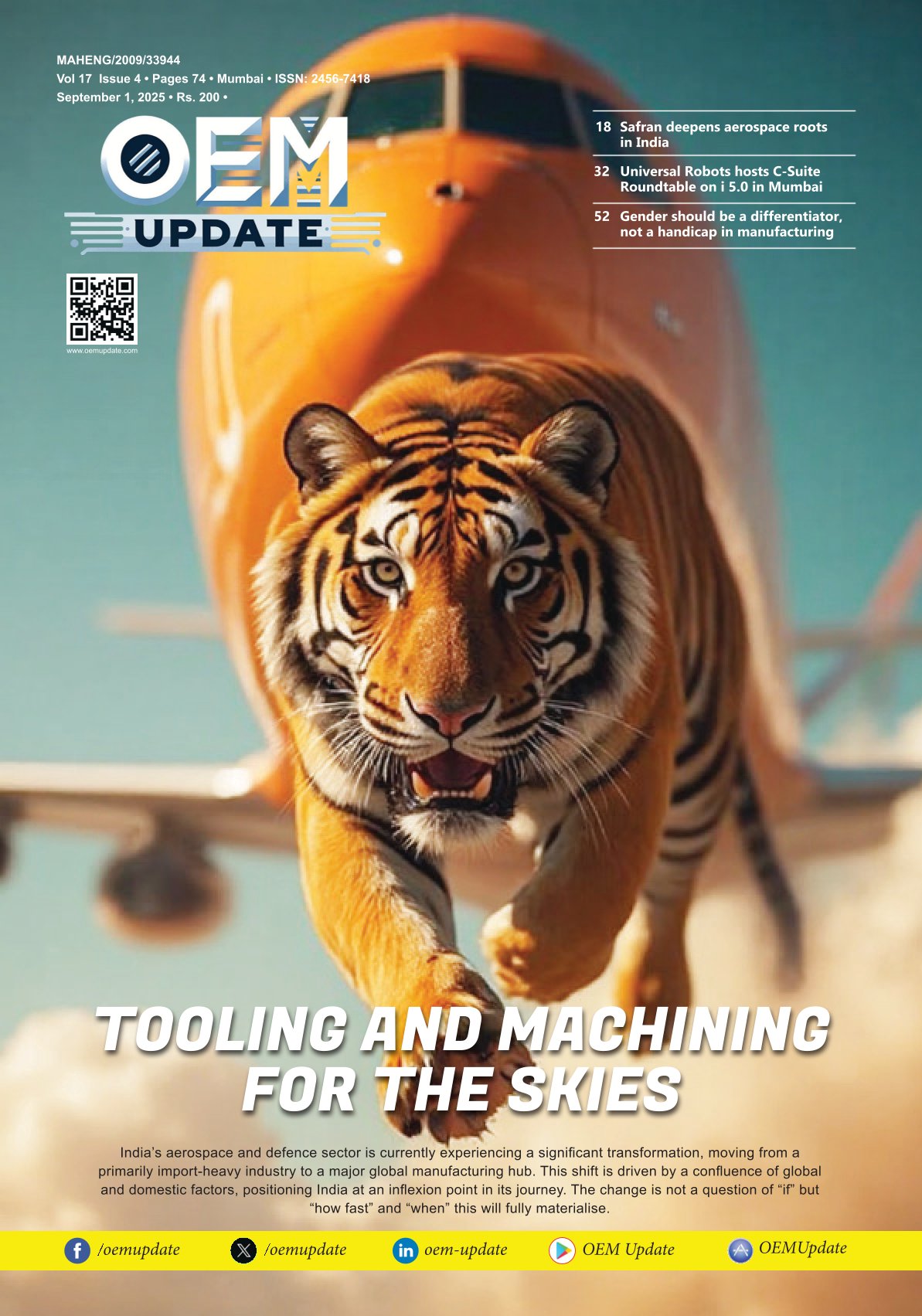Connect AI and robotics for enhanced manufacturing efficiency
By Staff Report July 31, 2024 6:07 pm IST
Sameer Gandhi, Managing Director of OMRON Automation, emphasises that AI and robotics in manufacturing transform operations by forecasting demand, optimising supply chains and enhancing safety protocols. These cutting-edge technologies streamline workflows, reduce costs, and boost productivity, propelling the industry towards efficiency and innovation.
How can AI and machine learning technologies be utilised in factory automation to enhance production efficiency?
AI and machine learning cutting-edge technologies are driving the Industry 4.0 movement, which seeks to create intelligent factories that can adapt to market needs more efficiently, flexibly, and swiftly.
Some key ways these technologies are transforming factory automation is: by enabling a Smart Predictive Maintenance system that uses data from sensors and machines to anticipate equipment failures and schedule maintenance accordingly. It reduces downtime and increases the longevity of machinery. Machine learning models can spot flaws in products with high accuracy by examining images and sensor data. This maintains product quality and also lowers waste. AI can improve production processes by studying historical and real-time data to find inefficiencies and recommend solutions.
AI also improves supply chain efficiency by forecasting demand, managing inventory levels, and enhancing logistics. This ensures that materials and products are ready when required, minimising delays and costs. AI-enabled robots handle complex tasks, such as assembly and packaging, with high precision and speed while cooperating with human workers, boosting overall productivity. Finally, the impact of AI on Energy Management is also significant. It helps to optimise energy consumption in factories, resulting in substantial cost savings and a reduced environmental impact.
What benefits are achievable to reduce downtime and maintenance costs by implementing preventive maintenance tools in factory automation?
Implementing preventive maintenance leads to proactive and regular maintenance that keeps machinery in optimal condition, extending its operational life. Data-driven insights help determine the optimal times for maintenance, avoiding over-maintenance and under-maintenance. That means less frequent replacements and a better return on investment. Without the benefit of these tools, maintenance activities are usually scheduled basis of operational experience. Predictive tools can suggest scheduling maintenance activities based on equipment performance learning over time, minimising disruption to production. Sensors and AI monitor equipment health in real time, identifying potential issues before they lead to failures. All this leads to improved product quality, reduced downtime, enhanced safety and cost savings, as Regular maintenance is generally less expensive than fixing breakdowns.

How do robotics improve safety in manufacturing, resulting in short production cycle times?
Robotics in manufacturing improves safety, productivity and efficiency, resulting in shorter production cycles and better output quality. Robots can do tasks in risky environments or with dangerous materials. By taking over repetitive, hazardous and unsafe tasks, robots help avoid and lower the chance of accidents and injuries to humans.
They work with high accuracy and reliability, lowering the chance of mistakes that could cause accidents. This matters a lot in tasks that need exact measurements and movements. Cobots, in particular, can work safely with humans. They have sensors and safety features that help them sense and prevent collisions, making the workplace safer. Advanced robotics systems can check their performance and the environment in real-time, allowing for quick changes to stop potential safety risks. With fewer accidents and injuries, there is less unplanned downtime, keeping production lines running.
Robotics also affects production cycle times a lot. They can work non-stop without breaks, leading to faster production cycles and more output. This helps meet higher output needs and reduces the time to finish tasks. Robots can also deal with multiple tasks smoothly. This optimisation reduces delays and ensures a smoother, more coordinated operational flow.
In what ways do real-time data analytics and monitoring systems optimise manufacturing workflows and ensure consistent quality control?
Real-time data analytics and monitoring systems help manufacturers optimise their workflows and keep consistent quality control. They monitor production lines to find and fix delays and inefficiencies. They analyse data from sensors and equipment to predict and prevent machine failures. They also enable dynamic scheduling, allowing manufacturers to change production schedules based on current conditions.
Feedback loops are created where quality control information is used to improve production processes. It leads to managers getting real-time insights, improving informed decision making and enhancing operational efficiency. Monitoring systems ensure quality standards are met, detecting and correcting any deviations. They use sensors and AI to do automated inspections, reducing human error and increasing quality reliability. To sum up, these technologies are to stay ahead in today’s competitive manufacturing environment.
What measures can be adopted to address challenges associated with integrating robotics into existing manufacturing to derive the benefits?
Integrating robotics into existing manufacturing systems can be challenging, but by addressing these challenges strategically, manufacturers can assemble robotics into their operations, enhancing productivity, efficiency, and safety.
Here are some key strategies. Conduct a detailed cost-benefit analysis to support the investment. Begin with a trial project and collaborate with robotics experts and system integrators to ensure smooth integration with existing systems like ERP and MES. Follow standardised protocols and interfaces to facilitate integration and future updates.
Provide training programs to upskill workers and include employees in the integration process to lower resistance and encourage a culture of innovation. Other strategies involve introducing robots slowly into existing workflows to reduce disruption, starting with less critical processes and gradually moving to main operations -finally, redesigning processes to match robotic capabilities, and optimising both human and robotic workflows.
Cookie Consent
We use cookies to personalize your experience. By continuing to visit this website you agree to our Terms & Conditions, Privacy Policy and Cookie Policy.
















